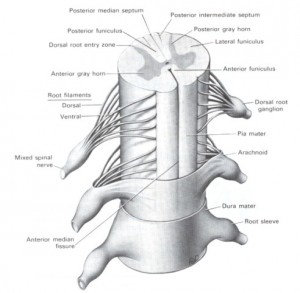Increased Neural Tissue Thickness And Neuron Density Increase Bone Longitudinal Growth Rate In Childhood
 There has been this theory/hypothesis which has emerged from some recent readings I’ve done which suggest that the critical factor that defines how fast a child grows is related to how high is the neuronal density in their bodies when they were being developed prenatally and while they were going through the infant years.
There has been this theory/hypothesis which has emerged from some recent readings I’ve done which suggest that the critical factor that defines how fast a child grows is related to how high is the neuronal density in their bodies when they were being developed prenatally and while they were going through the infant years.
In Robert Becker’s book The Body Electric, he tested the ability to regenerate a part of a body that had been cut off on many different types of lab animals. Obviously Becker and his research team did not test it on humans, monkeys, pigs, or dogs since these guys are large sized complex mammals and there has not been any results showing that a large mammal can regrow an arm. What they did test it on were on smaller animals, some of them reptiles, others amphibians, and other small animals. His most famous comparison was being the salamanders, the lizards, and the frogs. It was the salamander which was considered the best animal to test it on since it was considered the most complex animal to have a high level of regenerative ability.
After maybe 5-10 years of experimentation, his results showed that one of the key reasons why larger animals, even as large as say a lab rat, can not regenerate is because the density of the neurons and the thickness of the neural tissue bundles was too low compared the overall amount of body mass.
There was a critical threshold in the Neural Tissue/Overall Body Mass of an animal. If the animal had a ratio that was higher, then there was enough tissue thickness and neuron density to allow for limb regeneration. If the neural tissue/overall body mass ratio was less, then it was not possible.
It was shown in one study that if a person tested the potential and polarity of a flathead worm, and then put battery wires which would give the overall flathead worm body an opposite polarity but strong potential, the head of the flatworm would actually pop out onto the opposite side, and original head would pop into the body.
This is why and how I came up with this idea that if might be that some people are genetically born to become taller than their peers because during embryo development, and right after they were born, there was much more neuronal tissue in their body than other people. They had slightly larger brains, and a thicker spinal cord. They just had more neuronal density and tissue mass per mass than other young infants and kids growing up.
This lead to a better electrical connection between all the areas of the body. That result is that while they were still young and going through the growth period, their bones would grow longer and bigger at a faster rate.
{It should be noted that LSJL upregulates some genes associated with neurons like serotonin receptors. BDNF affects the differentiation of growth plate chondrocytes. BDNF stands for Brain-Derived Neutrophic factor. BNDF deletion led to increased longitudinal bone growth. Neuronal CaSR’s(calcium sensory receptor) regulate skeletal development. Mice that had neurons without CaSR were shorter. So increased height could be due to the increased amount of CaSR receptors and we know that calcium as a role in longitudinal bone growth as well as calcium being involved in almost all cell differentiation-Tyler}
